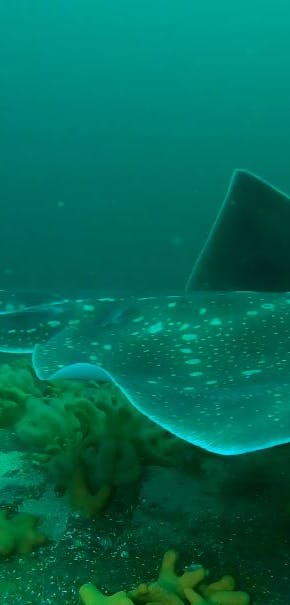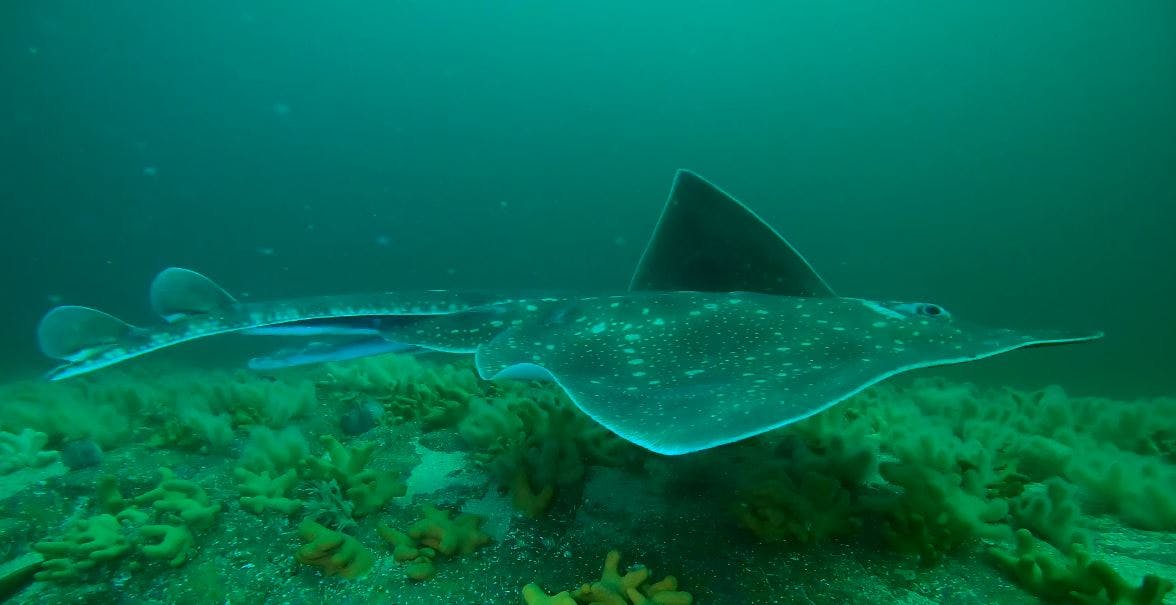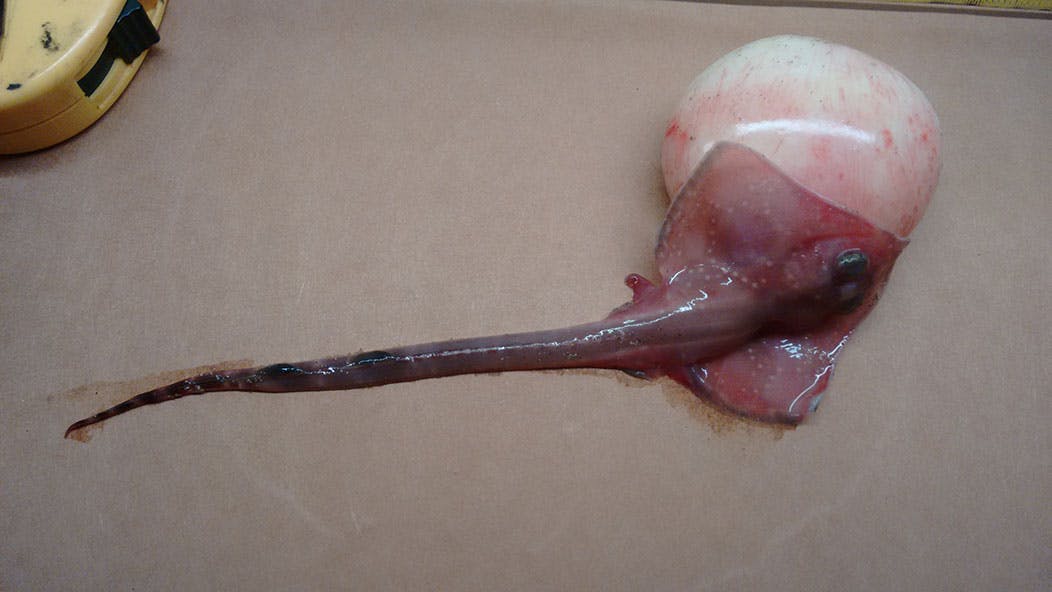Common skate




The common skate scans the seabed for lobsters, crabs, and shrimp. When it catches one, it breaks open the hard shell with its strong jaws. But the skate doesn't only hunt on the bottom; it is fast and agile enough to catch fish like mackerel. The skate is at the top of the food chain. If it thrives in an area, it indicates that there is an abundance of prey and the ecosystem is healthy.

Onbekend, waarschijnlijk meer dan 40 jaar
Spanwijdte: maximaal 200 centimeter
Maximaal 285 centimeter
Tot 100 kilogram
The greatest threat to the common skate is intensive fishing. When ships drag large trawl nets across the seabed, skates get entangled in the nets. As a result, the skate population has significantly declined over the past century. Fortunately, it is now prohibited for EU countries to fish for skates. Unfortunately, skates still end up as bycatch in fishing nets.

The eggs of the common skate can be up to 20 centimeters long. In English, they are also called 'mermaid's purse'. It takes about 530 days for the skate to emerge from the egg capsule. Therefore, skates grow very slowly: they are only fertile after 11 years. Female skates also reproduce only once every two years. That's why the skate population recovers slowly. Additionally, skates naturally don't travel long distances; they usually stay in the area where they were born. This means that the skate has difficulty returning to areas where there was previously a lot of fishing.

In 2021, the EAZA (European Association of Zoos and Aquaria) started a monitoring program for the common skate. Although there are no skates in aquariums at the moment, EAZA is exploring the possibility of breeding skates. For this purpose, EAZA is researching what is required to keep the skate in an aquarium in a proper way, taking into account all the needs of this large predatory fish. Blijdorp Zoo coordinates this monitoring program, contributing to the conservation of the common skate.
The common skate (Dipturus batis) was once abundant in the North Sea, Norwegian Sea, and around the British Isles and Iceland. Nowadays, they are primarily found in areas unsuitable for fishing. They inhabit sandy and muddy seabeds, usually up to around 200 meters deep.